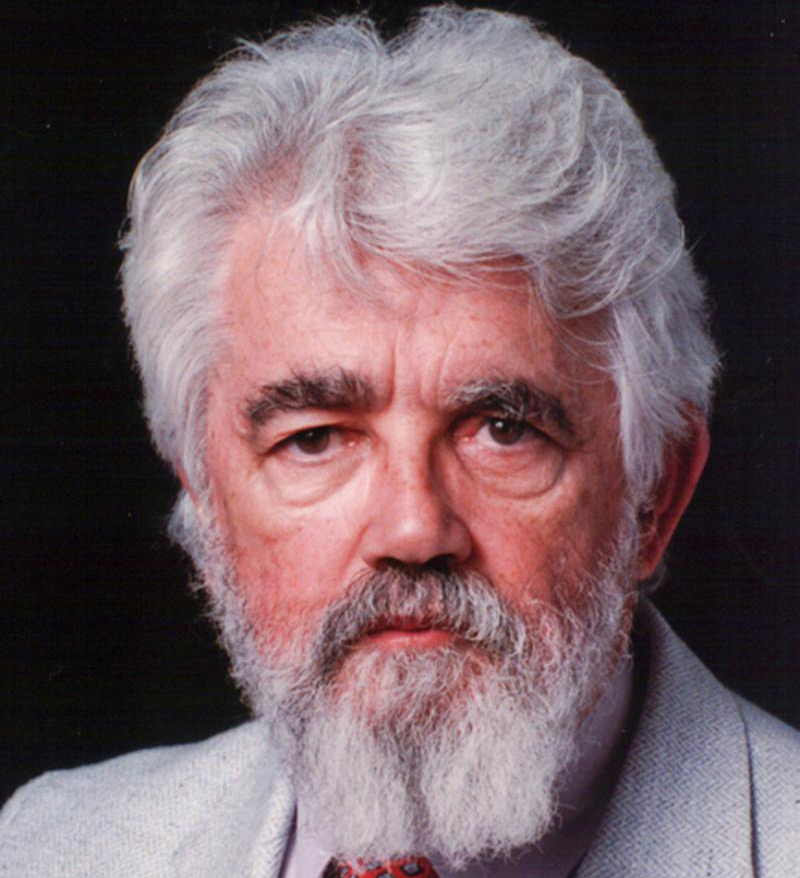John McCarthy: The Visionary Pioneer of Artificial Intelligence and Computer Science
John
McCarthy stands as one of the most influential figures in the history
of computer science, a true polymath whose groundbreaking work
fundamentally transformed our relationship with technology. Born in 1927
and passing in 2011, McCarthy's 84 years of life spanned an
extraordinary period of technological evolution, much of which he
himself helped to create.

This comprehensive examination of McCarthy's
life and work will explore his early years and education, his
foundational contributions to artificial intelligence and programming
languages, his development of revolutionary computing concepts, his
philosophical perspectives on machine intelligence, and his enduring
legacy in the digital age.
Early Life and Formative Years
John
McCarthy entered the world on September 4, 1927, in Boston,
Massachusetts, the son of an Irish immigrant father, John Patrick
McCarthy from the small fishing village of Cromane in County Kerry, and a
Lithuanian Jewish immigrant mother, Ida Glatt McCarthy. The McCarthy
family, like many during the Great Depression, faced significant
economic challenges that forced them to relocate frequently until they
eventually settled in Los Angeles, where his father found work as an
organizer for the Amalgamated Clothing Workers union .
McCarthy's
parents were active members of the Communist Party during the 1930s,
and they instilled in their son a strong commitment to learning and
critical thinking. This intellectual environment proved fertile ground
for young John's burgeoning scientific curiosity. Before even entering
high school, McCarthy developed a passion for science through reading a
Russian children's science book titled "100,000 Whys," which had been
translated into English. This early exposure to scientific thinking
would shape his entire career trajectory .
The
young McCarthy displayed extraordinary intellectual abilities,
particularly in mathematics. During his teenage years, he taught himself
college-level mathematics by studying textbooks used at the nearby
California Institute of Technology (Caltech). His self-directed learning
allowed him to skip the first two years of mathematics when he
eventually enrolled at Caltech in 1944, having graduated from Belmont
High School two years early .
However, his academic journey wasn't without obstacles - he was
temporarily suspended from Caltech for failing to attend physical
education classes, a requirement he apparently considered less important
than his mathematical studies. During this interruption, he served in
the U.S. Army before returning to complete his Bachelor of Science
degree in mathematics in 1948 .
A
pivotal moment in McCarthy's intellectual development occurred during
his time at Caltech when he attended a lecture by the legendary
mathematician and computer scientist John von Neumann. This experience
planted the seeds for McCarthy's future work in computation and
artificial intelligence. He would later pursue graduate studies at
Princeton University, where he earned his PhD in mathematics in 1951
under the supervision of Donald C. Spencer with a dissertation titled
"Projection operators and partial differential equations" .
Academic Career and Institutional Contributions
After
completing his doctorate, McCarthy began what would become a storied
academic career with brief appointments at Princeton and Stanford
University. In 1955, he joined Dartmouth College as an assistant
professor, marking the beginning of his formal engagement with computer
science. Just a year later, in 1956, he moved to the Massachusetts
Institute of Technology (MIT) as a research fellow, where he would make
some of his most significant early contributions .
At
MIT, McCarthy became affectionately known as "Uncle John" to his
students, a testament to both his approachable nature and the respect he
commanded in the academic community. His time at MIT proved
extraordinarily productive, as he worked alongside other computing
pioneers like Marvin Minsky to establish the foundations of artificial
intelligence as a formal discipline .
In
1962, McCarthy made what would become a permanent move to Stanford
University as a full professor. He would remain at Stanford until his
retirement in 2000, helping to establish the university as one of the
world's leading centers for computer science research. In 1965, McCarthy
became the founding director of the Stanford Artificial Intelligence
Laboratory (SAIL), which under his leadership became a hotbed of
innovation in machine intelligence, graphical interactive computing, and
autonomous vehicles .
The
environment McCarthy fostered at SAIL during the 1960s and 1970s became
legendary in computing circles. With adequate funding, powerful
computers, and cutting-edge peripheral equipment, McCarthy assembled a
community of brilliant faculty, students, and staff who pushed the
boundaries of what was possible with computing technology. Much of the
equipment and software needed for their research was developed in-house
at SAIL, leading to foundational work in numerous technologies that
would later become ubiquitous, including graphical user interfaces,
computer typesetting and publishing systems, speech recognition, expert
systems, computer vision, robotics, and computer music.
The Birth of Artificial Intelligence
While
John McCarthy made numerous contributions to computer science, he is
perhaps best known as one of the principal founders of the field of
artificial intelligence. In 1955, McCarthy coined the term "artificial
intelligence" in connection with a proposed summer workshop at Dartmouth
College. The original name being considered for the field was "Automata
Studies," which McCarthy found too vague and nondescript. His suggested
alternative, "artificial intelligence," would come to define an entire
discipline .
The
famous Dartmouth Summer Research Project on Artificial Intelligence in
1956, organized by McCarthy along with Marvin Minsky, Nathaniel
Rochester, and Claude Shannon, is widely considered the founding event
of AI as a distinct field of study. The proposal for this workshop
articulated the ambitious goal that "every aspect of learning or any
other feature of intelligence can in principle be so precisely described
that a machine can be made to simulate it" .
McCarthy's
vision for AI differed significantly from some of his contemporaries.
While others focused on neural networks or brain simulation approaches,
McCarthy championed the use of formal logic and mathematical reasoning
as the foundation for creating intelligent systems. In a famous 1958
paper and subsequent memos, he proposed that the knowledge needed by AI
programs should be represented in declarative sentences (primarily in a
logical language) rather than being encoded within the programs that use
that knowledge. As he succinctly put it, "Sentences can be true in much
wider contexts than specific programs can be useful" .
This
approach to AI, focusing on knowledge representation and logical
reasoning, inspired generations of researchers and led to numerous
practical applications. Recognizing the challenges of getting logical
systems to work with commonsense knowledge, McCarthy extended
traditional logic to handle contexts and default reasoning (knowledge
that is generally true but may have exceptions). His 1978 development of
the circumscription method of non-monotonic reasoning provided a way
for AI systems to make reasonable assumptions in the face of incomplete
information .
McCarthy's
philosophical perspective on machine intelligence was both pragmatic
and visionary. In his 1979 article "Ascribing Mental Qualities to
Machines," he made the provocative claim that "Machines as simple as
thermostats can be said to have beliefs, and having beliefs seems to be a
characteristic of most machines capable of problem-solving
performance." This stance placed him in direct opposition to
philosophers like John Searle, whose famous 1980 "Chinese Room Argument"
contended that machines cannot truly understand or possess beliefs
because they lack consciousness and intentionality .
Lisp: The Language of AI
Among
McCarthy's most enduring technical contributions is the invention of
the Lisp programming language in 1958. Lisp (short for "LISt
Processing") was revolutionary in several respects and became the
dominant language for AI research for decades. McCarthy's discovery that
primitive recursive functions could be extended to compute with
symbolic expressions led directly to Lisp's creation .
The
language introduced numerous innovative concepts that would later
become standard in programming language design. Most notably, Lisp was
based on the lambda calculus, a formal system in mathematical logic for
expressing computation. McCarthy's 1960 paper "Recursive Functions of
Symbolic Expressions and Their Computation by Machine, Part I"
established the theoretical foundations of Lisp as a universal
computational formalism .
Several key features made Lisp particularly suitable for AI research:
Symbolic computation:
Unlike most languages of its time that focused on numerical
computation, Lisp could easily manipulate symbols and symbolic
expressions.
Functional programming: Lisp treated computation as the evaluation of mathematical functions, avoiding state changes and mutable data.
Homoiconicity: Lisp code is represented as Lisp data structures, enabling powerful metaprogramming capabilities.
Dynamic typing: Types are associated with values rather than variables, providing flexibility in programming.
Automatic memory management: Through garbage collection (another McCarthy innovation), Lisp handled memory allocation and deallocation automatically .
The
impact of Lisp cannot be overstated. It became the language of choice
for AI applications throughout the 1960s, 70s, and 80s, with programs
written in Lisp being used in everything from NASA spacecraft to expert
systems. While its popularity waned somewhat in the 1990s with the rise
of other paradigms, Lisp experienced renewed interest in the 21st
century, particularly in the open-source community. Today, Lisp dialects
like Common Lisp and Scheme continue to be used, and Lisp's influence
can be seen in many modern programming languages .
McCarthy's
work on Lisp also led to another fundamental contribution to computer
science - the invention of garbage collection. Around 1959, McCarthy
developed automatic memory management techniques to solve problems in
Lisp implementation. This "garbage collection" method, which
automatically reclaims memory occupied by objects that are no longer in
use by the program, has become a standard feature in most modern
programming languages and is crucial for managing memory in complex,
long-running applications .
Time-Sharing and the Foundations of Modern Computing
While
McCarthy's contributions to AI and programming languages are widely
celebrated, his work on time-sharing systems represents another
monumental achievement that fundamentally changed how humans interact
with computers. In a memo written on January 1, 1959, McCarthy became
the first to describe a practical method for general-purpose computer
time-sharing - allowing multiple users to simultaneously interact with a
single mainframe computer as if each had sole access to the machine .
This
concept was revolutionary at a time when computers were extremely
expensive and scarce resources. Before time-sharing, computers operated
in batch processing mode, where users would submit jobs to be run one at
a time, often waiting hours or days for results. Time-sharing made
interactive computing possible, dramatically increasing both the utility
of computers and the productivity of their users .
McCarthy's
ideas about time-sharing inspired four separate groups at MIT to
develop such systems, leading directly to the creation of the Compatible
Time-Sharing System (CTSS) and later the Multics system. These
developments made possible the ARPANET a few years later, which began as
a network of time-sharing systems and eventually evolved into the
modern Internet. As McCarthy's colleague Lester Earnest told the Los
Angeles Times, "The Internet would not have happened nearly as soon as
it did except for the fact that John initiated the development of
time-sharing systems. We keep inventing new names for time-sharing. It
came to be called servers... Now we call it cloud computing. That is
still just time-sharing. John started it" .
In
1961, McCarthy took the concept even further by proposing utility
computing during a speech celebrating MIT's centennial. He envisioned a
future where computing power and even specific applications could be
sold through a utility business model similar to electricity or water
services. While this idea was ahead of its time in the 1960s and faded
during the 1980s and 90s, it has reemerged in the 21st century in forms
like application service providers, grid computing, and most notably,
cloud computing - proving McCarthy's vision remarkably prescient .
Contributions to Programming Language Design
Beyond
Lisp, McCarthy made significant contributions to the design and
standardization of programming languages more generally. In 1958, he
served on an Association for Computing Machinery (ACM) ad hoc committee
on programming languages that became part of the committee responsible
for designing ALGOL 60, one of the most influential programming
languages in history .
In
August 1959, McCarthy proposed the use of recursion and conditional
expressions in programming languages, concepts that became integral
parts of ALGOL 60 and subsequently nearly all modern programming
languages. Recursion (the ability of a function to call itself) and
conditional expressions (which evaluate to different values based on
conditions) are now fundamental constructs that programmers use daily .
McCarthy's
involvement in programming language standardization continued as he
became a member of the International Federation for Information
Processing (IFIP) Working Group 2.1 on Algorithmic Languages and
Calculi. This group was responsible for specifying, maintaining, and
supporting ALGOL 60 and its successor ALGOL 68, languages that set new
standards for clarity and precision in programming language design .
Throughout
his career, McCarthy maintained a strong interest in formal methods for
proving that computer programs meet their specifications. This work on
program verification represented an important contribution to software
reliability and the mathematical foundations of computer science .
Later Research and Unconventional Ideas
Even
after establishing the foundations of AI and making seminal
contributions to programming languages and systems, McCarthy continued
to explore new ideas and push boundaries. His later research focused on
formalizing commonsense knowledge and reasoning - arguably one of the
most challenging problems in AI .
McCarthy
recognized that while humans effortlessly use vast amounts of
background knowledge about how the world works, capturing this
"commonsense" in a form computers could use proved extraordinarily
difficult. He worked on developing formal logics that could represent
this knowledge and reasoning methods that could operate efficiently on
it. This work remains highly influential in AI research today .
Always
the visionary, McCarthy proposed several unconventional ideas that
demonstrated his ability to think far beyond the current state of
technology. In 1982, he conceived of the "space fountain," a
hypothetical megastructure extending into space and maintained
vertically by the outward force of a stream of pellets propelled from
Earth along a conveyor belt that would return the pellets to the ground.
Payloads could theoretically ride this conveyor belt upward, providing a
potential method for reaching orbit without rockets .
He
also worked on Elephant 2000, a programming language with semantic
features based on speech acts. Though initially envisioned for
implementation by the year 2000, McCarthy revised the deployment date
twice - first to 2005, then to 2015 - demonstrating both his persistent
interest in language design and his recognition of the challenges
involved in creating truly novel programming paradigms .
Personal Life and Broader Interests
Beyond
his scientific achievements, McCarthy led a rich personal life marked
by intellectual curiosity, adventure, and strong principles. He was
married three times - his second wife, Vera Watson, was a programmer and
mountaineer who died in 1978 attempting to scale Annapurna I Central as
part of an all-women expedition. His third wife, Carolyn Talcott, was a
computer scientist at Stanford and later at SRI International .
McCarthy's
upbringing in a Communist household gave way to quite different
political views in adulthood. After visiting Czechoslovakia in 1968
following the Soviet invasion, he became a conservative Republican,
demonstrating his independent thinking and willingness to change his
views based on experience .
He declared himself an atheist during a speech about artificial
intelligence at Stanford Memorial Church, showing no hesitation in
expressing his convictions .
An
avid participant in early online communities, McCarthy frequently
engaged in discussions on Usenet forums, often commenting on world
affairs and scientific topics. Some of his broader ideas about
technology and society can be found on his sustainability webpage, which
aimed to show that "human material progress is desirable and
sustainable" .
McCarthy
was also a passionate advocate for mathematics education. His Usenet
signature for years read, "He who refuses to do arithmetic is doomed to
talk nonsense," and his license plate frame carried a similar message:
"Do the arithmetic or be doomed to talk nonsense." This reflected his
belief in the importance of quantitative reasoning in public discourse .
In
2001, McCarthy published a short story titled "The Robot and the Baby"
that explored, in a farcical manner, questions about whether robots
should have (or simulate having) emotions. The story anticipated aspects
of internet culture and social networking that would become prominent
in subsequent decades, demonstrating his ability to foresee the societal
implications of technology .
Awards and Recognition
John
McCarthy's extraordinary contributions to computer science and
artificial intelligence earned him numerous prestigious awards and
honors throughout his career. These accolades reflect both the depth and
breadth of his impact on the field:
1971 Turing Award:
Often considered the "Nobel Prize of computing," awarded by the
Association for Computing Machinery for his contributions to artificial
intelligence .
1985 Computer Pioneer Award: Recognizing his foundational work in establishing the field of computer science .
1985 IJCAI Award for Research Excellence: The first recipient of this award from the International Joint Conference on Artificial Intelligence .
1988 Kyoto Prize:
Japan's highest private award for global achievement, honoring
McCarthy's contributions to computer science and artificial intelligence .
1990 National Medal of Science:
The United States' highest scientific honor, awarded to McCarthy in the
Mathematical, Statistical, and Computational Sciences category .
1999 Computer History Museum Fellow:
Inducted "for his co-founding of the fields of Artificial Intelligence
(AI) and timesharing systems, and for major contributions to mathematics
and computer science" .
2003 Benjamin Franklin Medal: Awarded by the Franklin Institute in Computer and Cognitive Science .
2011 IEEE Intelligent Systems' AI's Hall of Fame: Inducted for "significant contributions to the field of AI and intelligent systems" .
2012 Stanford Engineering Hero: Recognized posthumously as one of Stanford University's most influential engineers .
Additionally,
McCarthy received honorary degrees from Linköping University in Sweden,
the Polytechnic University of Madrid, Colby College, Trinity College
Dublin, and Concordia University in Montreal. The California Institute
of Technology named him a Distinguished Alumnus, recognizing his
exceptional career .
Legacy and Lasting Impact
John
McCarthy passed away on October 24, 2011, at his home in Stanford,
California, leaving behind a legacy that continues to shape our digital
world. His contributions extend far beyond the specific technologies he
created or the papers he published - he helped define entire fields of
study and established paradigms that guide research to this day.
The
field of artificial intelligence, which McCarthy named and helped
create, has grown from a speculative research area to a driving force in
21st-century technology. Modern applications of AI in areas like
natural language processing, computer vision, and machine learning all
build on foundations that McCarthy helped establish. While the dominant
approaches in AI have shifted over time - from the symbolic methods
McCarthy championed to statistical and neural network approaches - the
essential questions he posed about machine intelligence remain central
to the field .
Lisp,
though no longer the dominant language it once was, continues to
influence programming language design. Its emphasis on functional
programming, metaprogramming, and symbolic computation can be seen in
many modern languages. More importantly, McCarthy's work on Lisp
demonstrated how theoretical computer science (in this case, lambda
calculus) could directly inform practical language design - an approach
that has become standard in the field .
Time-sharing,
McCarthy's other major innovation, has evolved but remains fundamental
to how we use computers today. The concept underlies modern operating
systems, cloud computing, and virtually all server-based architectures.
The Internet itself, as his colleague noted, might not have developed as
quickly without the foundation of time-sharing systems .
Perhaps
McCarthy's greatest legacy is his example as a thinker who combined
deep theoretical insight with practical engineering sensibility. He
showed how rigorous mathematical formalisms could lead to real-world
systems, and how visionary ideas could become transformative
technologies. His work continues to inspire new generations of computer
scientists and AI researchers who stand on the shoulders of this
intellectual giant .
In
assessing McCarthy's impact, it's worth noting that many of his ideas
were ahead of their time - sometimes by decades. His proposals about
utility computing in 1961 anticipated cloud computing by nearly 50
years. His work on commonsense reasoning in AI identified challenges
that remain at the forefront of research today. This ability to see
beyond current technological limitations and imagine what could be
possible represents one of his most valuable contributions to the field .
As
we continue to develop increasingly sophisticated AI systems and
grapple with the implications of intelligent machines, McCarthy's
philosophical perspectives on the nature of machine intelligence remain
highly relevant. His view that even simple machines could be said to
have "beliefs" (understood as informational states that guide behavior)
provides a pragmatic framework for discussing machine cognition without
getting bogged down in debates about consciousness .
John
McCarthy's life and work demonstrate the profound impact that a single
visionary thinker can have on the course of technological progress. From
coining the term "artificial intelligence" to inventing fundamental
computing technologies, his contributions have shaped our digital world
in ways both obvious and subtle. As we move further into the 21st
century, with AI becoming ever more pervasive, we continue to build on
the foundations laid by this remarkable scientist - the true father of
artificial intelligence.








